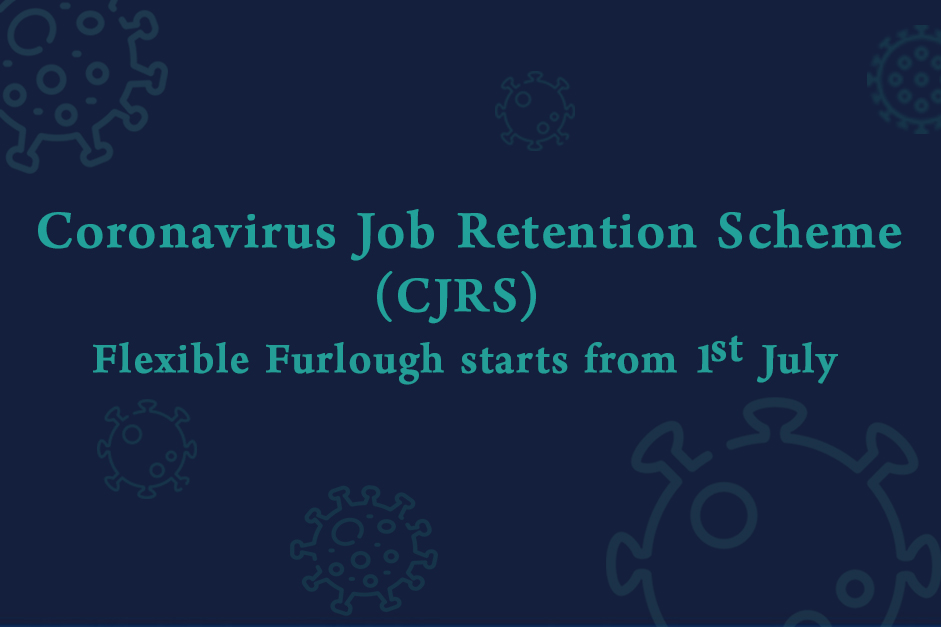Articles >
Covid 19 - Flexible Furloughing Starts on Job Retention Scheme

August 06, 2020
The coronavirus pandemic has taken a toll not only on world health but on businesses as well. The government with the introduction of the Coronavirus Job Retention Scheme(CJRS) earlier this year in March managed to save many employers from engaging in mass redundancies. However, the main criteria to furlough till the end of June was the assumption that the employee was ‘on temporary leave’ and thus, not doing any work i.e. not even working from home, for the employer. However, with the gradually easing down of the lockdown, employees are now going to rejoin the workforce. So, where does that leave us with furlough and the various business tax that employers have to pay?
Flexible Furlough starts from 1st July 2020
From July 2020 there is a dramatic change in furlough. You can still reclaim 80% on your employee’s wages upto the cap amount of £2500. However, this would be for the normal hours that they do not work. The same applies to the Employer NIC and WPP contributions as well. When your staff does not work, you can claim for those hours. But, when your employees are working for you (even part time or flexi hours) you need to pay their wages as well as bear the cost of the employer’s NIC and pension contributions.
There are other differences too, like for instance furlough can even run for a week now. However, by making employees pay for the NIC and pension part of the working hours the government is clearly gradually shifting away from the total dependency that the grant formerly offered. Therefore, considering this, it makes sense to ask your Payroll provider for some tax advice so that you know how much your PAYE and NIC liability will come to. Employment Allowance should help ease the burden.
Employer NIC and WPP will soon be non-reclaimable
From August employers will no longer be able to re-claim on the Employer’s NIC and WPP contributions for the time that the employee is marked on furlough. This will cause an increase in the monthly liability amounts that you as an employer are paying to the HMRC. Thus, you might want to check the business tax implications as well.
Furlough will no longer be 80%
From September to October (the last month of the scheme) the percentage contributed by the government falls from 70% to 60%. Your employee on the other hand is still to be paid at 80%. In short, the employer here would pay the deficit. Thus, you may want to get some tax advice to help you with the same.
Have you heard of the £1000 bonus?
Employers who continue to employ their employees on payroll till January and February 2021 will be entitled to a £1000 bonus per employee who remains on payroll. This clearly is a further incentive from the government to promote a stale job market.
Here’s a quick reference table which should assist you with the points mentioned above:-
| Month | Furloughed | Cap | ER NIC | ER WPP | Description |
| June | 80% (by govt.) | £2500 | Reclaimable | Reclaimable | Employer can pay 20% top-up |
| July | 80% for normal hours not worked i.e. apart from the part time hours | £2500 | For the hours the employee works it is the employer’s liability for the furlough it is reclaimable | For the hours the employee works it is the employer’s liability for the furlough it is reclaimable | If employees are kept full month of furlough they need not work part-time and will receive the normal 80% |
| August | 80% for normal hours not worked i.e. apart from the part time hours | £2500 | Non-reclaimable | Non-reclaimable | Full NIC and WPP amount to be borne i.e. 5% emp cost |
| September | 70% (by govt.) | £2187.50 | Non-reclaimable | Non-reclaimable | 10% employer pays |
| October | 60% (by govt.) | £1875 | Non-reclaimable | Non-reclaimable | 20% employer pays |

